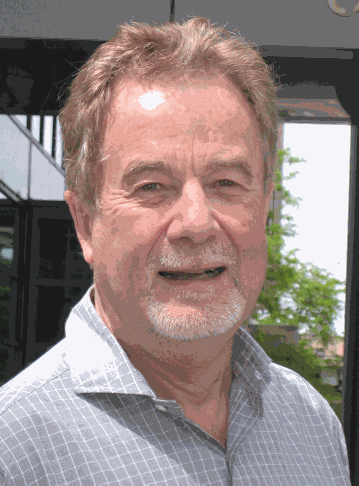The Advanced Photon Source (APS) is the Western Hemisphere’s most powerful source of x-rays for research. It attracts more than 4,000 users from academia, industry, and government laboratories around the world each year for research in all fields of science. In particular, almost half of the user community is in the life sciences area. The appointment of a Senior Advisor for Life Sciences at the APS (SALSA) to provide a stronger linkage with the life sciences community has been recommended by APS review committees and has been a priority for APS management. Furthermore, ongoing preparations for a major upgrade to the APS require strategic decisions that will benefit from the advice provided by an expert in this field. Following the recommendation of a search committee composed of APS management and users, I am pleased to announce the appointment of Prof. Keith Moffat of the University of Chicago to this position.
Prof. Moffat is a long-time leader in life sciences at x-ray synchrotrons and a pioneer of time-resolved x-ray studies. He received his undergraduate degree in Physics from the University of Edinburgh, and his Ph.D. in Protein Crystallography from the University of Cambridge. As a professor at Cornell University he developed MacCHESS, among the world's first synchrotron facilities to serve structural biologists. He moved to the University of Chicago in 1990, where he is the Louis Block Professor of Biochemistry & Molecular Biology and a founding member of the Institute for Biophysical Dynamics. Prof. Moffat is the Principal Investigator for the BioCARS team at Sector 14 of the APS, the structural biology component of the interdisciplinary University of Chicago’s Consortium for Advanced Radiation Sources, which he directed from 1993 to 2000. He has received a Guggenheim Fellowship and the 2011 Patterson Award of the American Crystallographic Association.
Prof. Moffat's responsibilities as SALSA will include:
Providing advice to APS management on the priorities, challenges, and future directions of the life sciences community at the APS
Coordinating development of a strategy for life sciences facilities and policies at the APS in the context of the APS Upgrade project that will foster and stimulate world-class achievements
Interacting with life science advisors and senior staff at other synchrotron facilities
Working with groups within the life sciences community to advocate for funding
Prof. Moffat’s new responsibilities will open a stronger relationship between the APS and the life sciences community and a new era in the growth of this critical area.
G. Brian Stephenson
Director, Advanced Photon Source
Associate Laboratory Director for Photon Sciences, Argonne National Laboratory
The Advanced Photon Source at Argonne National Laboratory is one of five national synchrotron radiation light sources supported by the U.S. Department of Energy’s Office of Science to carry out applied and basic research to understand, predict, and ultimately control matter and energy at the electronic, atomic, and molecular levels, provide the foundations for new energy technologies, and support DOE missions in energy, environment, and national security. To learn more about the Office of Science x-ray user facilities, visit http://science.energy.gov/user-facilities/basic-energy-sciences/.
Argonne National Laboratory seeks solutions to pressing national problems in science and technology. The nation's first national laboratory, Argonne conducts leading-edge basic and applied scientific research in virtually every scientific discipline. Argonne researchers work closely with researchers from hundreds of companies, universities, and federal, state and municipal agencies to help them solve their specific problems, advance America's scientific leadership and prepare the nation for a better future. With employees from more than 60 nations, Argonne is managed by UChicago Argonne, LLC for the U.S. Department of Energy's Office of Science.

